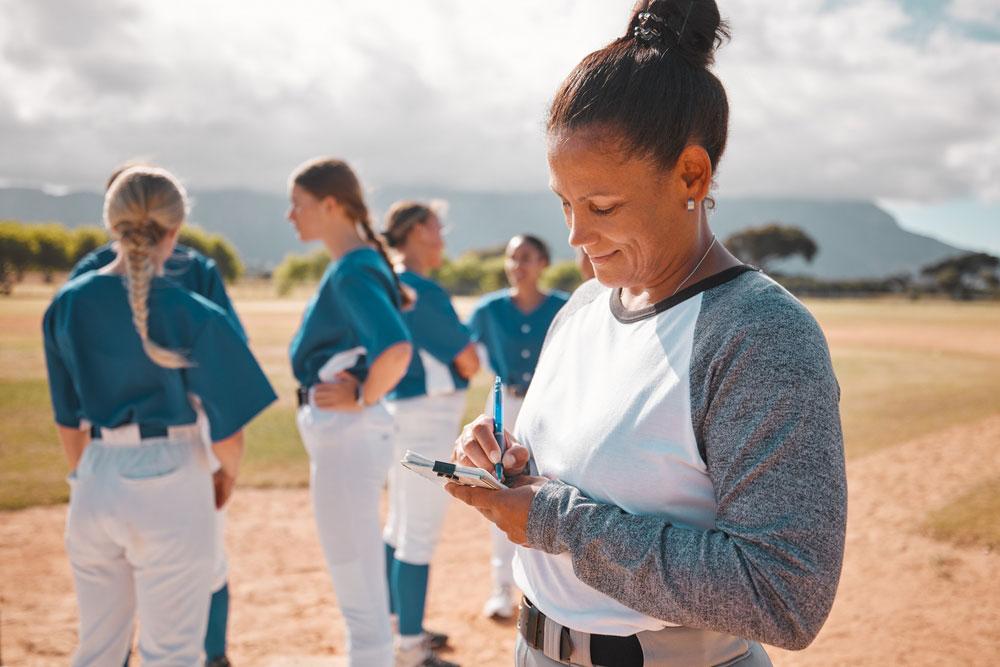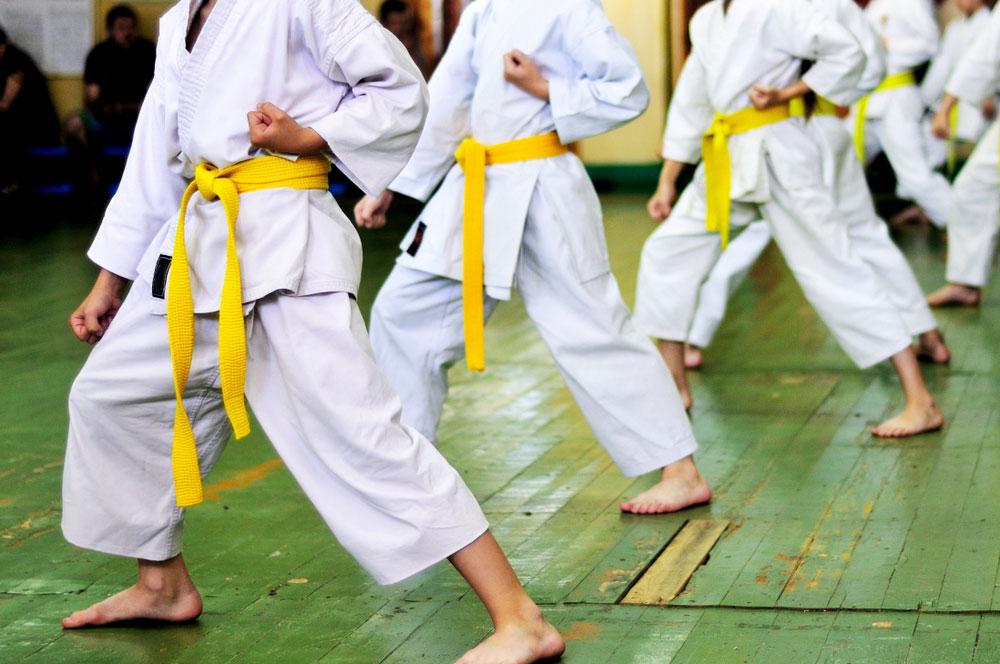 As a coach, one of your primary challenges is to help your athletes learn and display sportsmanship. When it comes to sportsmanship, TrueSport Expert and Assistant Director of Sport Psychology at Ohio State University, Charron Sumler, PhD, LPCC, likes starting with the three E’s: prioritizing effort over outcome, practicing emotional regulation, and developing and using effective communication.
As a coach, one of your primary challenges is to help your athletes learn and display sportsmanship. When it comes to sportsmanship, TrueSport Expert and Assistant Director of Sport Psychology at Ohio State University, Charron Sumler, PhD, LPCC, likes starting with the three E’s: prioritizing effort over outcome, practicing emotional regulation, and developing and using effective communication.
For coaches, teaching sportsmanship through emotional regulation is especially important. But modeling emotional regulation, or the ability to understand, assess, and control emotions in potentially difficult situations, is no small task. Here, Sumler shares a few ways that you can start improving your own emotional regulation and better model sportsmanship along the way.
Develop awareness
It’s important to remember that anytime you’re with athletes, they’re assessing and absorbing your behavior, whether they realize it or not. That’s why it’s important that you’re able to model healthy emotional regulation to your athletes. As Sumler notes, parents and coaches must self-regulate if they’re going to help athletes do the same. Many coaches experience moments when emotions take over and lead them to act in ways they’re not so proud of. They often report feelings of shame, embarrassment, and disappointment after displaying poor sportsmanship.
Start by identifying your emotions as they happen
“The first part of emotional regulation is knowing what emotions you’re experiencing in any given moment,” says Sumler. “You can’t regulate your emotions if you don’t understand what emotions you’re feeling.”
Sumler’s favorite journaling exercise for improving your ability to check in with your emotions is to write down two or three emotions you experienced during the day before you go to bed. Try to be specific, so rather than saying you were unhappy, identify if you were frustrated, sad, angry, or impatient. Struggling to name your emotions? Look at a feelings wheel or list of emotions to find the words that best describe your emotions. This is also a great exercise to suggest to athletes!
Respond rather than react
Emotional regulation doesn’t mean hiding your feelings. Instead, it means being able to respond rather than react. “Being able to pause and think about how you want to respond to a situation versus reacting immediately is the next step,” says Sumler. Like physical skills, emotional skills take practice and training before they become second nature. Practicing mindfulness can help you “buy” time in tense situations. Starting this week, try to slow down your responses to emotionally charged events by testing out the following strategies: three deep belly breaths, counting your inhale and exhale to 20, box breathing, or progressive muscle relaxation.
Often, this moment of pause is all it takes to shift your instant (often emotional) reaction to a more measured response. It also helps your athletes realize that it’s okay to take a beat in the heat of the moment rather than instantly reacting.
Know your triggers
Are you a coach who gets frustrated when an athlete shows up late to practice? While it’s reasonable to have rules for the team, yelling at an athlete who is three minutes late isn’t going to help the team’s sense of cohesion or safety. “It’s really helpful when coaches are aware of their hot button issues and can tell when they’re about to become frustrated and have that emotional reaction,” says Sumler.
Instead of reacting with emotions, establish consequences ahead of time for behaviors that are unacceptable and triggering. For example, let the team know at the start of the season that anyone late to practice will be responsible for staying late to clean up after.
In cases where you can’t have specific rules in place, or in highly charged emotional moments, Sumler recommends coming back to the power of taking a pause before reacting.
Understand that you don’t need to change your emotion
If you’re trying to regulate an emotion like frustration, keep in mind that you don’t necessarily need to shift to being happy or patient. Instead, Sumler urges coaches and athletes to think about emotions as having a volume dial that can be turned up or down. When you find yourself in a moment of frustration, the goal isn’t to change your emotion entirely, it’s to dial it down to a manageable level. Sometimes this means taking a five-minute break, having a drink of water or a snack, or simply reminding yourself to get more sleep tonight.
You can help athletes practice this by encouraging them to visualize the ‘dial’ for an emotion and by talking about what you need to turn down your dial. Sumler notes that almost all people—adults and youth—will find that their emotions can be turned down simply by fulfilling basic needs of eating, drinking, and resting. Breathwork, meditation, and mindfulness can also be helpful in these moments.
Be aware of your own ego and how it plays into your reactions
 “In competitions, it’s important to recognize that there may be points where your negative emotions are taking over,” says Sumler. “Often this happens when our ego is speaking more loudly than our values. In those times, we may respond and react in ways that are intended to protect our ego. But our athletes are looking to us for how to handle the situation and the pressure. For coaches, if you’re able to turn inward and remember your team’s values—like sportsmanship, effort, and teamwork—you’ll often break out of that ego-driven moment.” Many coaches experienced success as an athlete and bring similar expectations to their roles as coaches. It’s important to understand when your personal interests and intentions are rising above those of the team or individual development. It is often in these moments that coaches report higher frequencies of cursing, throwing objects, and speaking disrespectfully to officials. Spend some time at the beginning of the season identifying your coaching “why” for the year. Reflect back to your “why” during times of frustration and disappointment to help you remember your values and intentions.
“In competitions, it’s important to recognize that there may be points where your negative emotions are taking over,” says Sumler. “Often this happens when our ego is speaking more loudly than our values. In those times, we may respond and react in ways that are intended to protect our ego. But our athletes are looking to us for how to handle the situation and the pressure. For coaches, if you’re able to turn inward and remember your team’s values—like sportsmanship, effort, and teamwork—you’ll often break out of that ego-driven moment.” Many coaches experienced success as an athlete and bring similar expectations to their roles as coaches. It’s important to understand when your personal interests and intentions are rising above those of the team or individual development. It is often in these moments that coaches report higher frequencies of cursing, throwing objects, and speaking disrespectfully to officials. Spend some time at the beginning of the season identifying your coaching “why” for the year. Reflect back to your “why” during times of frustration and disappointment to help you remember your values and intentions.
You can also help your athletes tune into their egos, or the inner dialogue that’s focused on how an athlete is thinking about being perceived, by teaching them to catch the moments when their self-talk or emotions become negative during practice or competition. Ideally, you can help your athletes come up with their individual and team values at the beginning of the season, which Sumler says are ultimately the antidote for ego-driven action.
Know that you’ll likely make mistakes
Inevitably, we will make mistakes with our athletes. There will be moments when our emotions will get the best of us, says Sumler, especially if you’re new to the practice of emotional regulation.
“In those difficult moments, it’s hard to be vulnerable and to tell the team that you responded to them in a way that you’re not proud of and that doesn’t reflect your values,” says Sumler. “But these moments can be important opportunities for growth, both for you and your athletes. If you can acknowledge and apologize for your actions, you’re letting the team know that it’s safe for them to make mistakes and to own up to them. And that’s a hugely important lesson for athletes to learn.”
______________________
Takeaway
In order to regulate your emotions and to teach athletes to do the same, you first need to acknowledge and understand your emotions, as well as what tends to trigger them. You can also practice pausing before your respond, dialing down intense emotions, and focusing on your values to avoid ego-driven reactions. With emotional regulation, both you and your athletes will be better able to display sportsmanship in practice and competition.



